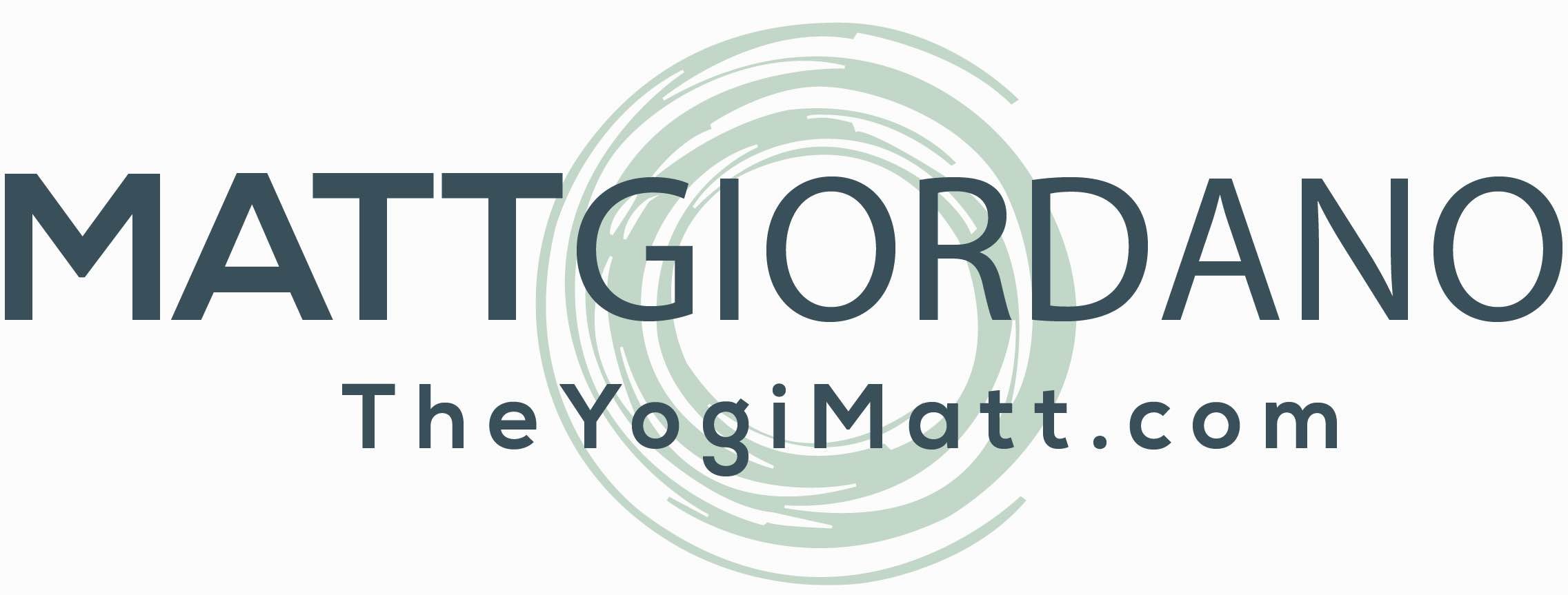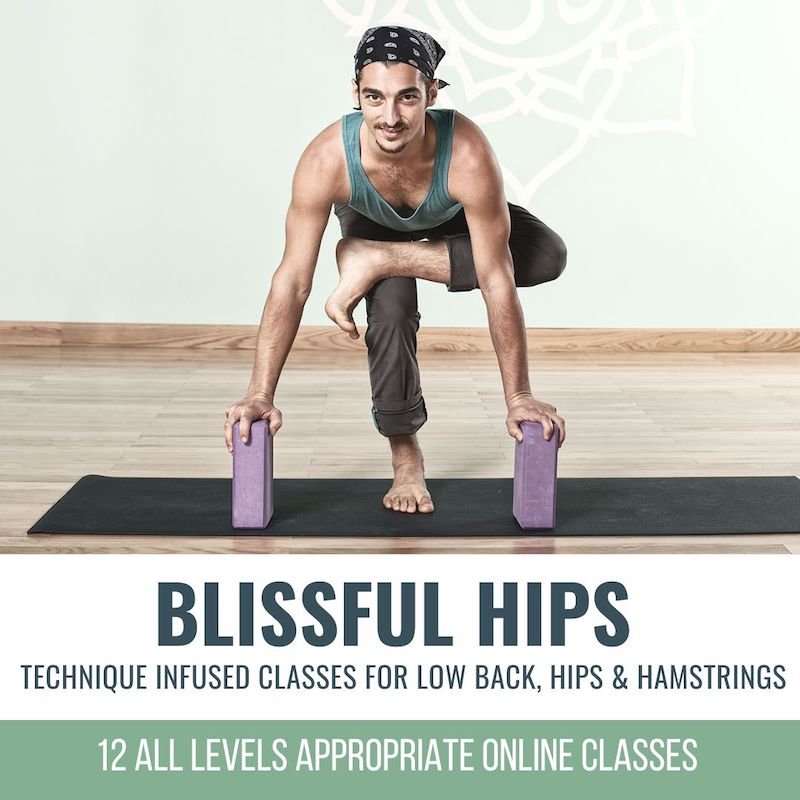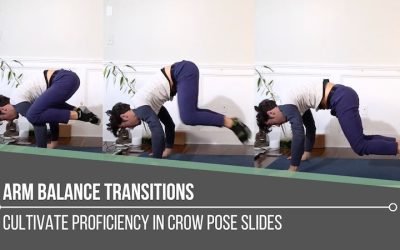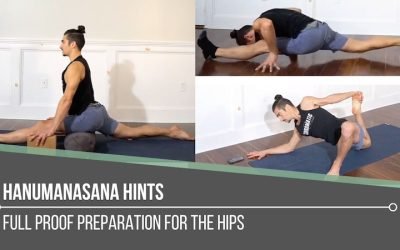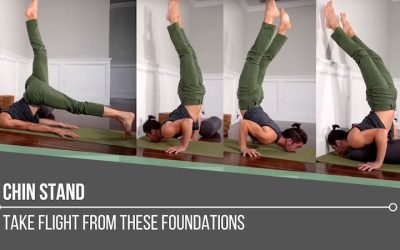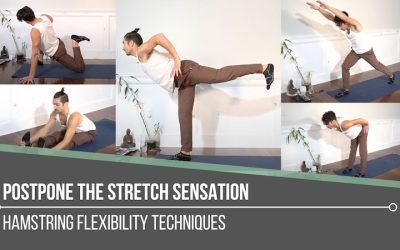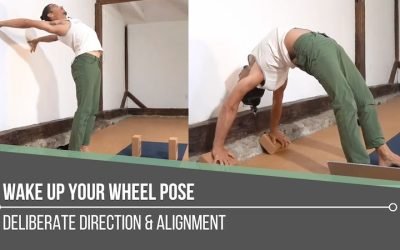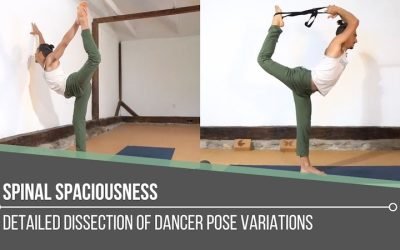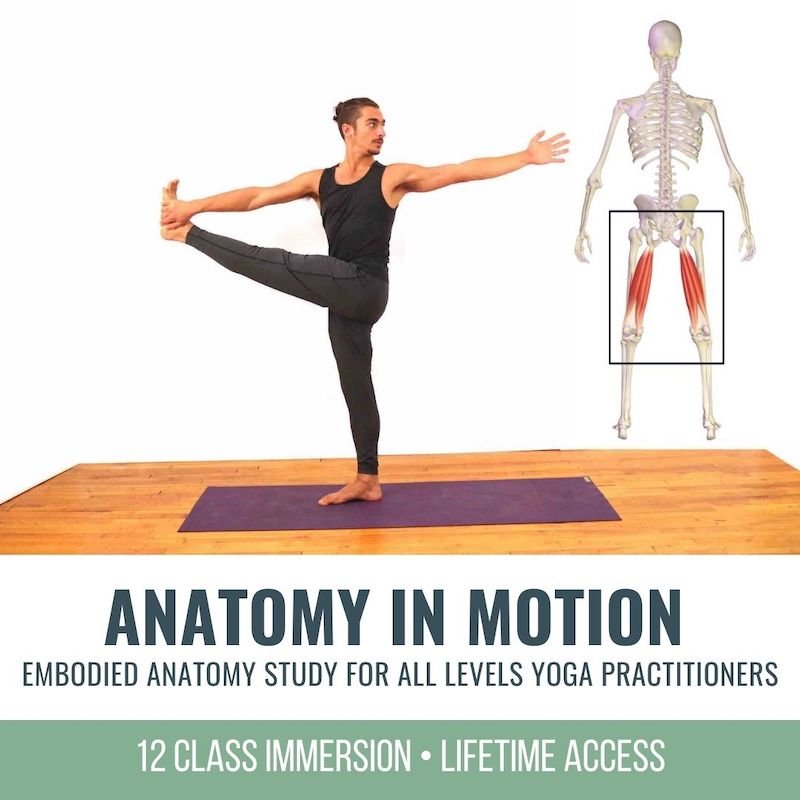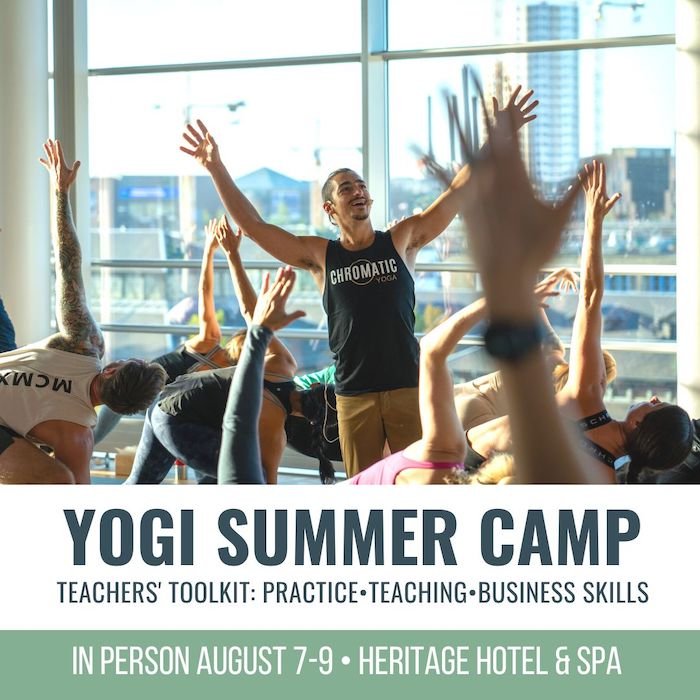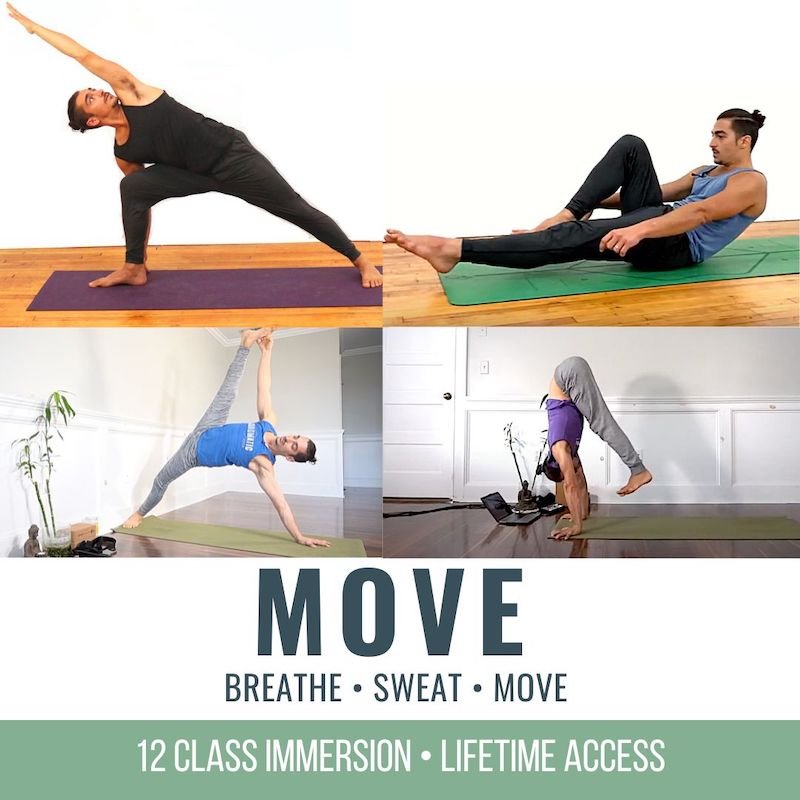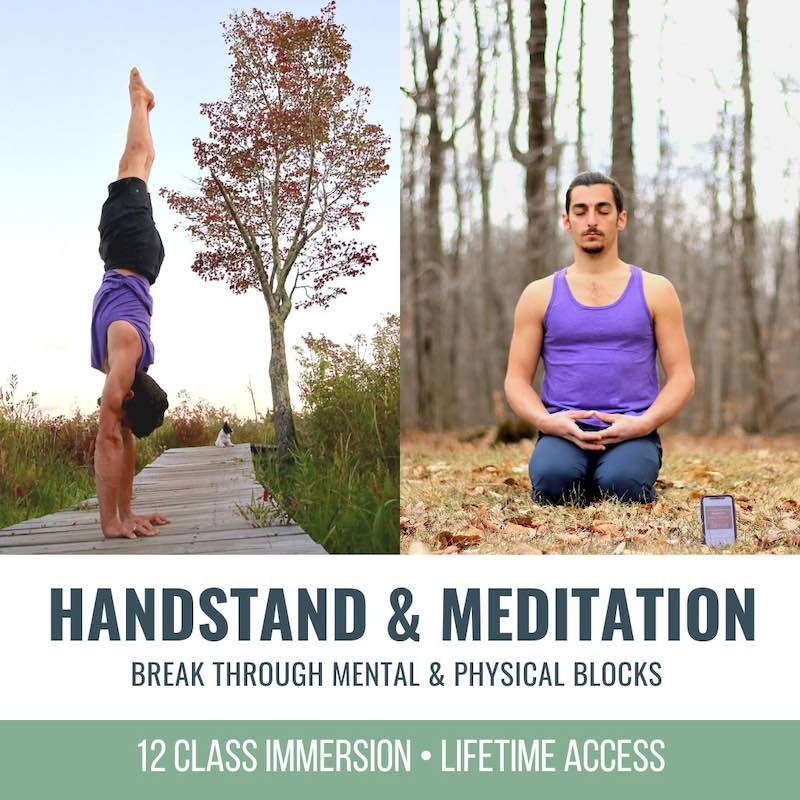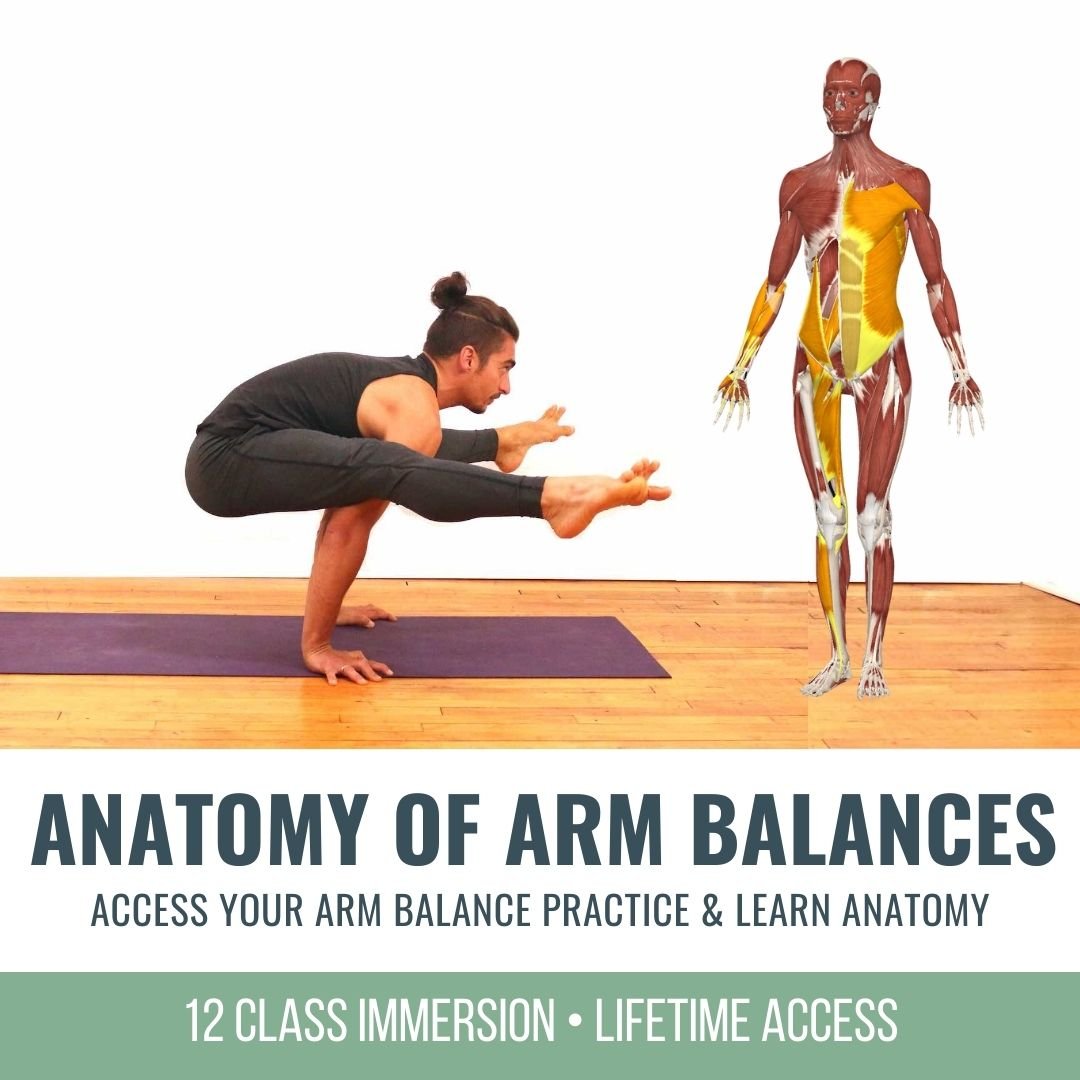Arm Balance TransitionskakasanaARM BALANCE TRANSITIONS Arm balance postures can be challenging enough without attempting to layer on a smooth transition in and out of them. However, fluid transitions are a natural progression in our yoga practice; they also provide...
Glutes & Hamstrings
Glutes and Hamstrings
8 Skills and Drills for Activation
strength
Glutes and Hamstrings
How many times has your yoga teacher said “feel your glutes” in a particular posture in a yoga class, but you’re not sure exactly what that means or what it’s actually supposed to feel like? You can easily lose or misunderstand the connection to the sensations in your body unless you’re intentional about locking in to each action in your asana practice. It’s more than that though—it’s also about learning the techniques to actually make the connection. Learning effective techniques and implementing them can help you to get to know your body in a deeper way, and this can very effectively change how you move. In today’s video, Matt highlights 8 effective ways for you to connect to your glutes and hamstrings in order to strengthen them for better functionality overall.
BLISSFUL HIPS
December 2023 Immersion
- Technique-infused yoga classes
- Nondogmatic and effective alignment
- Improve low back health
- Increase hamstring and hip flexor mobility
- Improve flexibility of inner thighs and outer hips
- Improve posture on and off the mat
- 12 classes included
- Livestream optional; all classes available on demand after livestream’s complete
Registration now open!
LEARN THE TECHNIQUES
An excellent approach to connecting to your glutes and hamstrings is to learn technique. This provides a focus and removes the pressure of trying to randomly figure out where and how to feel what you may believe you’re supposed to feel. It also helps you explore your body in a safe way. In Matt’s approach, instead of just going through a variety of postures that are “prescribed” to fire up your glutes and hamstrings, Matt provides a direct how-to, which means there are articulations and repetitive actions that help you connect with certainty to the sensations in your glutes and hamstrings.
Strength is more than building muscle and resilience; it’s a skill. The skills and drills that Matt offers create a solid foundation for transformation and connection in your body.
WATCH THE VIDEO
GLUTES AND HAMSTRINGS: 8 SKILLS AND DRILLS FOR ACTIVATION
TRANSFORM THESE STANDING POSTURES
In Low Lunge, Matt demonstrates how to access your glutes and hamstrings effectively. To ignite your hamstrings in the front leg, drag your front heel back while creating a posterior tilt in the pelvis. When you also press down the front heel, your glutes will spark up.
In the video, Matt maintains the same actions in Warrior II, Goddess Pose, and the Pyramid variation he demonstrates. Pressing down through your heel and pulling your feet towards each other contracts and activates your glutes and hamstrings.
The Supported Warrior III “leg lift” variation offers specific pelvic articulations that are key to connecting to the sensations in your glutes and hamstrings, and Crescent Pose Slides are an effective glute and hamstring strengthener.
Incorporating these skills and drills will help you understand your body more deeply .
200 HOUR ONLINE TEACHER TRAINING
GET CERTIFIED & DEEPEN YOUR YOGA PRACTICE
- Deepen your yoga practice
- Build confidence speaking in front of groups in person and online
- Learn foundational class structures and templates
- Learn techniques for a wide range of yoga postures
- Get certified and highly qualified to teach yoga
- Yoga Alliance Globally Recognized Certification Program
GLUTE BRIDGE AND TABLE TOP VARIATIONS
These potentially more “traditional” movements to activate and strengthen your glutes and hamstrings are also executed with different levels and unique articulations in the video.
One of the first ways to really find connection in these variations is to remove your yoga mat! Matt wears socks on his hardwood floor. Wearing socks forces you to dig in a little deeper into the floor to find steadiness.
Matt offers 3 variations of Glute Bridge and 4 variations of Table Top. What’s nice about exploring the different variations is that you have the opportunity to find out where your needs are on each side of the body. This is where growth and understanding take place.
300 HOUR ONLINE TEACHER TRAINING
GET 500 HOUR CERTIFIED AS A MASTER TEACHER
Master your skill set as a teacher through refined techniques, anatomy, biomechanics, sequencing, philosophy, meditation techniques, theming, yoga business, and much more!
- Get 500 hour certified
- Learn anatomy, biomechanics, asana techniques
- Expand your teaching skills
- Masterful sequencing and verbal delivery
- Learn meditation and breathwork techniques
- Transformative tools: theming, dharma talks, satsang
WHY IS THIS IMPORTANT?
When it comes to the hamstrings, you may often think about how to become more flexible in that area of the body; what may be neglected is that to create integrity in your muscles, there must be a healthy degree of strength. Strength is often associated with glutes, but why, and how can you strengthen them effectively? If you strengthen your glutes and hamstrings effectively, you support your ability to propel your body forward in your daily movement. Applying these safe and effective techniques will contribute to your hip health and thus your overall health.
Register for Matt’s December 2023 Immersion Blissful Hips in order to learn and to expand your current toolbox for strength!
The 200 Hr. Teacher Training: Click Here to See the Next Start Date
The 300 Hr. Advanced Teacher Training: Click Here to See the Next Start Date
Article by Trish Curling
Videos Extracted From: Hip Mobility Immersion
ONLINE ANATOMY COURSE
- Accessible, exciting, and easy to learn
- Anatomy and biomechanics for yoga
- Appropriate for both teachers and students
- Learn joint alignment vs pose alignment
- Demystify yoga poses and transitions
- Release aches and pains
- Learn how to avoid common injuries
- Caters to all levels with modifications and props
- 20 hours Continued Education Credits with Yoga Alliance
- 20 hours toward Chromatic Yoga Certification and 300 Hour
- Lifetime access
Continue Learning
Arm Balance Transitions
Hanumanasana Hints
Hanumanasana HintssplitsHANUMANASANA HINTS Applying intelligent techniques to a posture like Hanumanasana is crucial—simply hoping for the best is definitely not the way to go! That mindset leaves us vulnerable to injury. Hanumanasana is also the type of pose that can...
Chin Stand
Chin Standganda bherundasanaCHIN STAND Without a doubt, Chin Stand requires preparation. This posture must be approached with the utmost humility, essential in order to respect the potential risk. If this pose is not explored regularly in our physical practice, it may...
Postpone The Stretch Sensation
Postpone the Stretch SensationflexibilityPOSTPONE THE STRETCH SENSATION If one of the goals of our physical yoga practice is to increase flexibility, we may automatically believe that we just need to stretch more. It’s critical that we understand that increasing...
Wake Up Your Wheel Pose
Wake Up Your Wheel Poseheart openerWAKE UP YOUR WHEEL POSE We don’t have to question it—we know whether or not we’re feeling open, free, and strong in Wheel Pose. There’s a lightness and expansiveness that takes over when everything falls into place: From the initial...
Spinal Spaciousness
Spinal Spaciousnessdancer poseSPINAL SPACIOUSNESS Some key indicators of spinal health include strong bones, durable yet flexible ligaments, supple discs, and strong supportive muscles. Aside from nutrition, it’s not enough to say that movement in general is enough to...
THE FREE TECHNIQUE PACK
When You Subscribe, You Will Get Instant Access to
- the Technique Pack: 15 yoga pose breakdowns
- exclusive online course discounts
- exclusive blogs and videos
